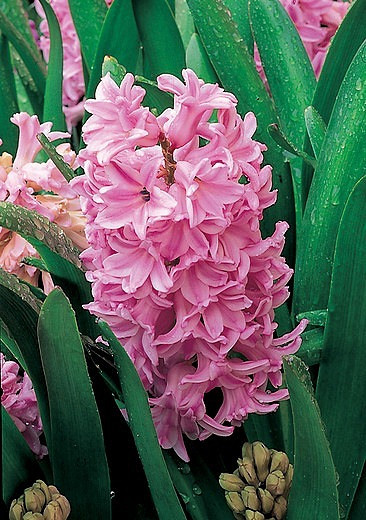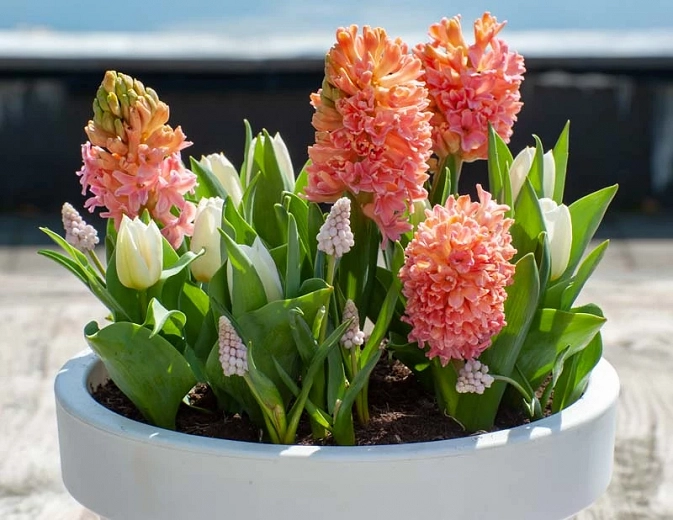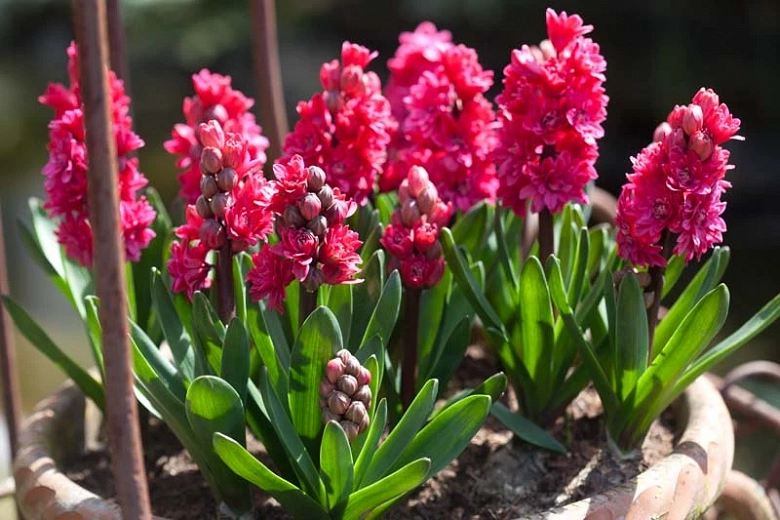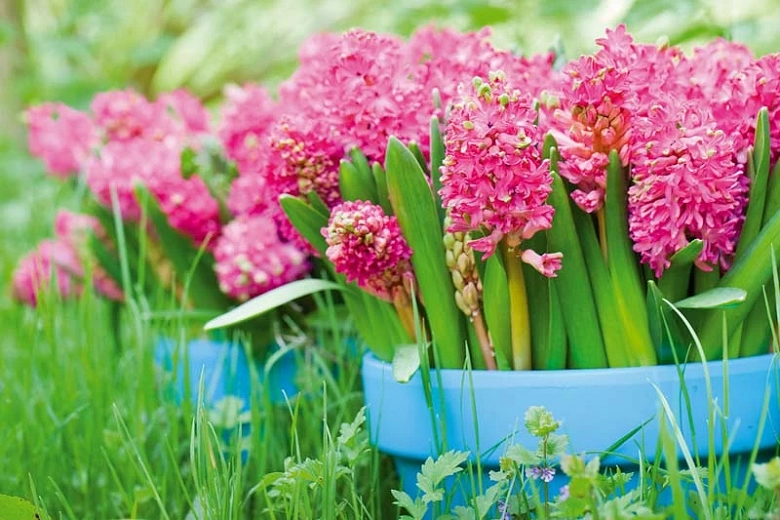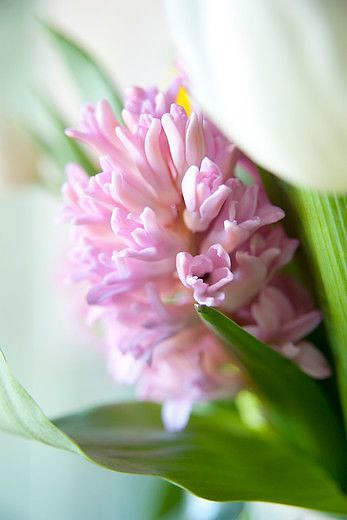Hyacinthus orientalis Lady Derby (Dutch Hyacinth)
A Dutch favorite available since 1883! Hyacinth ‘Lady Derby’ continues to be one of the most distinctive hyacinths in the flower world. With its pale rose-pink color, it brings a cheerful sight to the dull days of late winter. Featuring flowered spikes densely covered with starry, pink purple florets, it is highly fragrant. Floating atop erect, lance-shaped bright green leaves, this beauty blooms for 2-3 weeks in mid-spring.
A Dutch favorite available since 1883! Hyacinth 'Lady Derby' continues to be one of the most distinctive hyacinths in the flower world. With its pale rose-pink color, Hyacinth 'Lady Derby' brings a cheerful sight to the dull days of late winter! Featuring flowered spikes densely covered with starry, pink purple florets, it is highly fragrant! Floating atop erect, lance-shaped bright green leaves, this beauty blooms for 2-3 weeks in mid-spring. Plant it where you will be able to enjoy its perfume daily: near a doorway, along a path, near your patio or deck!
- Rising up to 8-12 inches tall (20-30 cm), this hyacinth will naturalize in the right spot. But it should be noted that flowering might decrease in quality over time.
- Thrives in moderately fertile, well-drained soils in full sun or part shade. Best flowering occurs with at least 6 hours of direct sun per day. In partial shade, they will do well the first year, but they will bloom less and less in the following years.
- Keep the soil moist during the growing season. Do not plant your hyacinth in waterlogged soil (it is susceptible to rot).
- Hyacinths are perfect for beds and borders, underplanting shrubs and roses, patio containers, or window boxes. Plant them close to paths, walkways, or doors, so you can enjoy their heady perfume. For the best visual impact, plant your hyacinths in groups of 5-9 bulbs.
- Hyacinths also make long-lasting cut flowers that will perfume an entire room.
- To be planted in the fall, from September to November, depending on your geographic location. Basically, any time after your first fall frost and before the ground freezes.
- No serious pest or disease issues. Keep an eye out for slugs or squirrels.
- Propagate by removing offsets when dormant in summer.
- Encourage your hyacinth to bloom for more than one year by cutting off the flower spikes as soon as the flowers fade. Do not remove the foliage until it withers and dies off. During this period, the hyacinth stores energy in the bulb for next year’s bloom. Cutting off the foliage before it has died back naturally may prevent the bulbs from storing enough energy. As a result, your hyacinths may not bloom next spring.
- Hyacinths contain oxalic acid — a substance that makes them deer or rodent resistant. Ingestion may cause severe discomfort. They are toxic to dogs, cats, and horses.
- Handling hyacinth bulbs can also cause mild skin irritation. Protective gloves are recommended.
Requirements
| Hardiness | 4 – 8 |
|---|---|
| Heat Zones | 1 – 9 |
| Climate Zones | 1, 2, 3, 4, 5, 6, 7, 10 |
| Plant Type | Bulbs |
| Plant Family | Hyacinthus – Hyacinths |
| Exposure | Full Sun, Partial Sun |
| Season of Interest | Spring (Mid) |
| Height | 8" – 1' (20cm – 30cm) |
| Spread | 3" – 4" (7cm – 10cm) |
| Spacing | 5″ – 6″ (12cm – 15cm) |
| Depth | 4" – 6" (10cm – 15cm) |
| Water Needs | Average |
| Maintenance | Low |
| Soil Type | Chalk, Clay, Loam, Sand |
| Soil pH | Acid, Alkaline, Neutral |
| Soil Drainage | Moist but Well-Drained, Well-Drained |
| Characteristics | Cut Flowers, Fragrant, Showy |
| Tolerance | Deer, Rabbit |
| Garden Uses | Beds and Borders, Patio and Containers |
| Garden Styles | City and Courtyard, Coastal Garden, Gravel and Rock Garden, Informal and Cottage |
